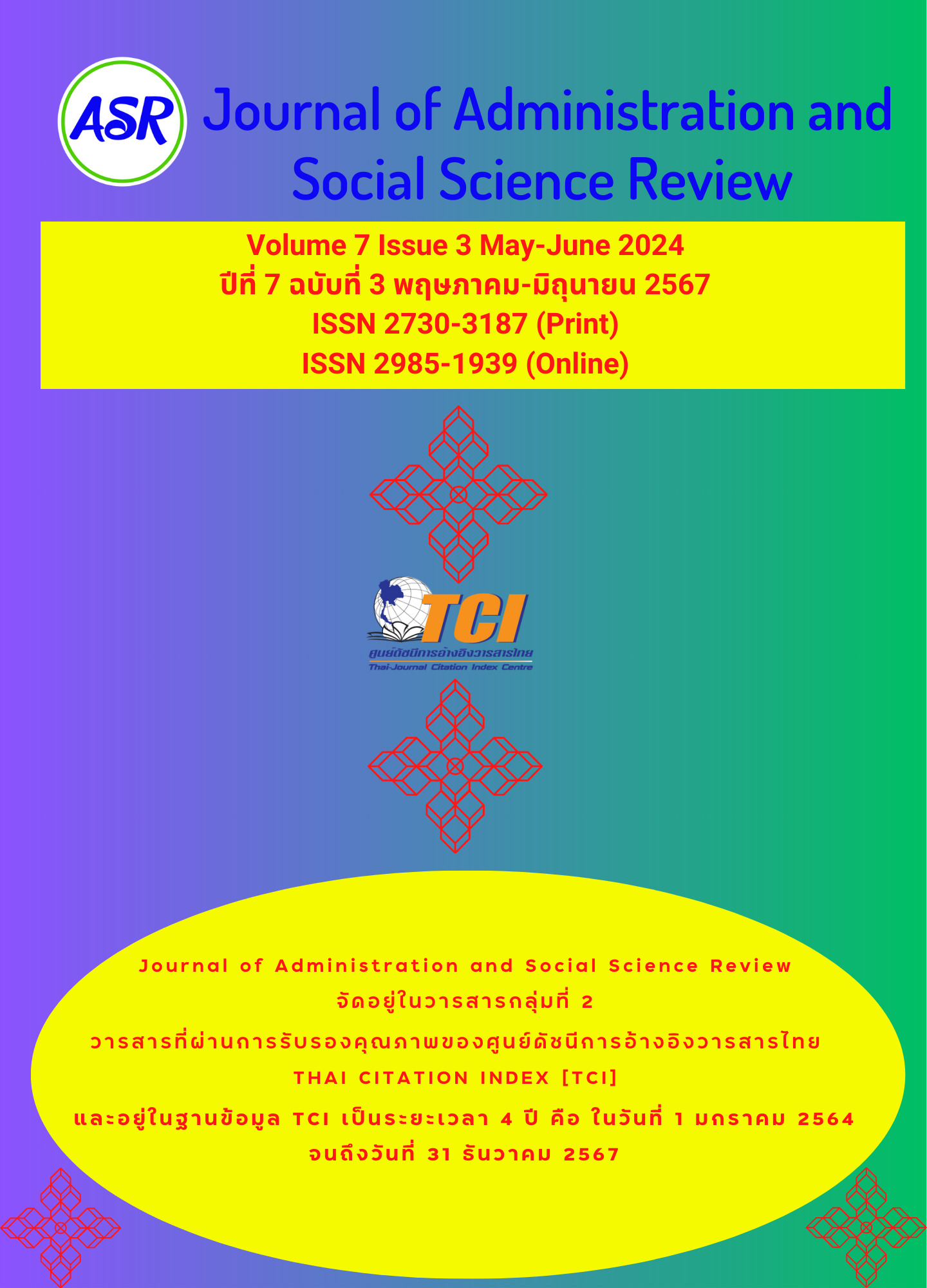Factors Affecting the Efficiency of Public Services Provided by Ban Mung Sub-district Municipality, Nern Maprang District, Phitsanulok Province
Keywords:
Efficiency, public service, municipalityAbstract
The objectives of this research were: 1) to study the levels of public service efficiency of Ban Mung sub-district municipality, Nern Maprang district, Phitsanulok province, 2) to investigate the factors influencing the public sevice provision of Ban Mung sub-district Municipality, Nern Maprang district, Phitsanulok province, and 3) to examine the problems, obstacles, and strategies for improving the efficiency of public service provision of Ban Mung sub-district Municipality, Nern Maprang district, Phitsanulok province. This research is quantitative in nature and employs a survey research design. The sample group comprises 400 residents of Ban Mung Sub-district Municipality. Data collection tools include questionnaires, and statistical analysis involves frequency, percentage, mean, standard deviation, and multiple regression analysis using the Enter method for selecting independent variables.
The research findings revealed that the overall efficiency of the public service provision by the municipality of Ban Mung sub-district, Nern Maprang district, Phitsanulok province, was at a high level. The aspect with the highest efficiency was the promotion of quality of life. Factors contributing to the efficiency of the public service provision included the consistency in service delivery, adequacy of service provision, continuity of service, timeliness of service, and progressive service provision. Among these factors, the progressive service provision had the most significant statistical impact at the 0.01 level. Identified challenges and obstacles in enhancing the efficiency of public service provision included spatial service delivery issues, organizational relationship dynamics, and community participation challenges. Strategies for improving public service efficiency were implementing comprehensive spatial management, fostering cooperation between organizations and other agencies, and establishing network communities.



